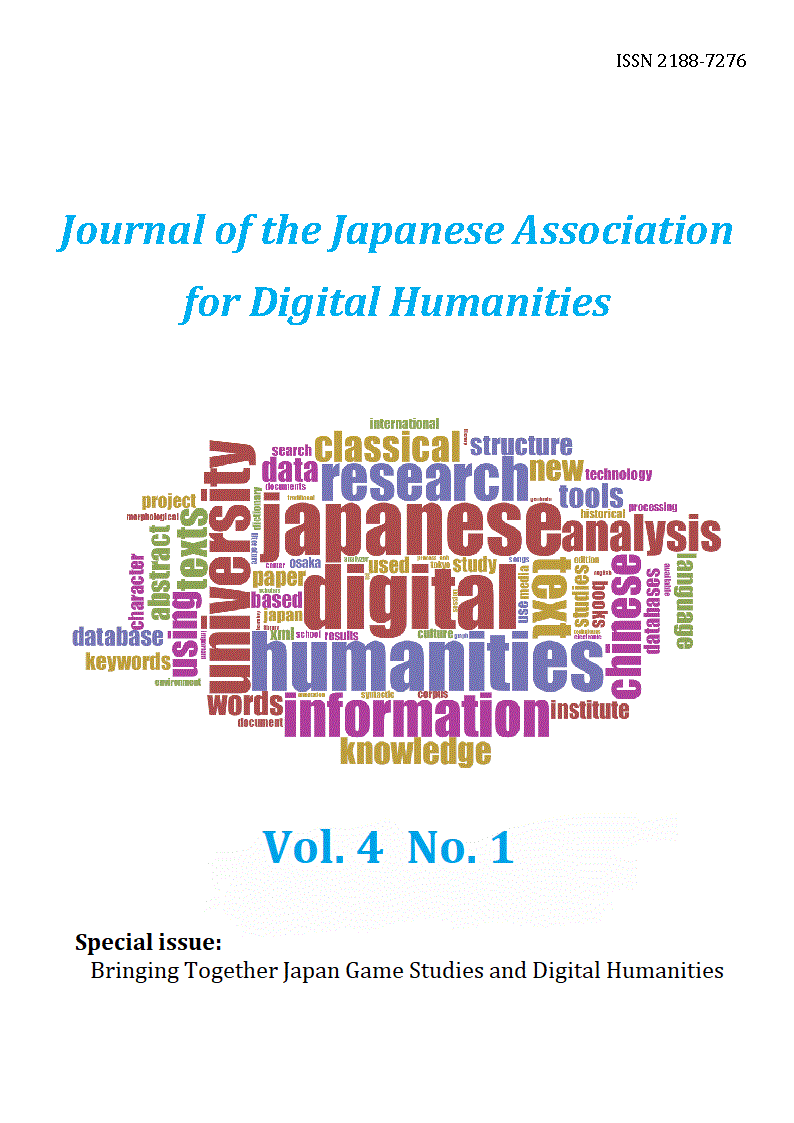Volume 4, Issue 1
Special issue: Bringing Together Japan Game Studies and Digital Humanities
Displaying 1-6 of 6 articles from this issue
- |<
- <
- 1
- >
- >|
Special issue: Bringing Japan Game Studies and Digital Humanities
-
2019Volume 4Issue 1 Pages 1-4
Published: August 30, 2019
Released on J-STAGE: August 29, 2019
Download PDF (155K) -
2019Volume 4Issue 1 Pages 5-6
Published: August 30, 2019
Released on J-STAGE: August 29, 2019
Download PDF (153K) -
2019Volume 4Issue 1 Pages 7-36
Published: August 30, 2019
Released on J-STAGE: August 29, 2019
Download PDF (1490K) -
2019Volume 4Issue 1 Pages 37-53
Published: August 30, 2019
Released on J-STAGE: August 29, 2019
Download PDF (379K) -
2019Volume 4Issue 1 Pages 54-71
Published: August 30, 2019
Released on J-STAGE: August 29, 2019
Download PDF (346K) -
2019Volume 4Issue 1 Pages 72-89
Published: August 30, 2019
Released on J-STAGE: August 29, 2019
Download PDF (1120K)
- |<
- <
- 1
- >
- >|
